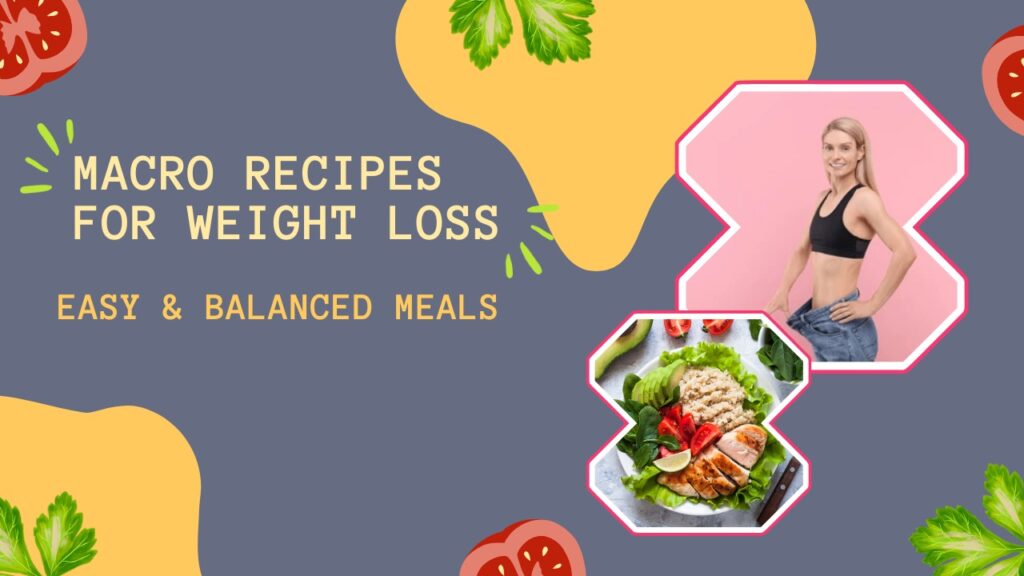Macro recipes for weight loss offer a flexible and sustainable way to shed pounds without feeling restricted. By focusing on the right balance of proteins, carbohydrates, and fats, you can nourish your body while still creating a calorie deficit for fat loss. This approach helps you enjoy a variety of foods instead of cutting out entire food groups, making it easier to stick with your plan long-term.
One of the main benefits of macro recipes for weight loss is that they can be tailored to individual goals and preferences. Whether you’re aiming to boost muscle, increase energy, or simply slim down, adjusting your macros ensures your meals work for you. You can enjoy satisfying, nutrient-rich dishes while staying on track.
From protein-packed breakfasts to balanced dinners, macro recipes for weight loss keep hunger at bay while supporting your health. This makes them a smart alternative to restrictive dieting.
If you’ve ever wondered what to eat, how to portion, or how to create meals that help burn fat, this guide covers everything. You’ll learn what macros are, how to calculate them for weight loss, and eight practical tips with delicious recipe ideas to keep you on track.
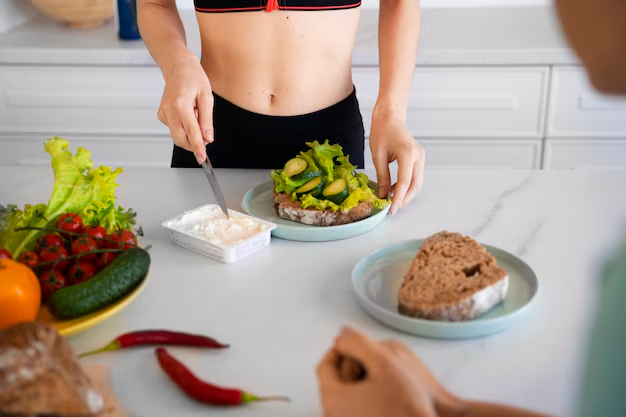
What Are Macros and Why They Matter for Weight Loss
Macros, short for macronutrients, are the three main nutrients your body needs in large amounts: protein, carbohydrates, and fats. Each plays a vital role—protein supports muscle repair, carbs provide energy, and fats aid in hormone production and nutrient absorption. Understanding macros is key to creating balanced meals that promote overall health.
When it comes to shedding pounds, tracking your macros can be more effective than simply counting calories. By focusing on the right ratios, you can preserve muscle, boost metabolism, and stay energized while losing fat. This is where macro recipes for weight loss become valuable, as they’re designed to hit your specific nutrient targets.
Macro recipes for weight loss allow you to enjoy satisfying meals without cutting out favorite foods. Instead of extreme restrictions, you can adapt everyday dishes to match your macro needs, making your weight loss journey more sustainable and enjoyable over time.
Macros—short for macronutrients—are the nutrients your body needs in large amounts for energy, recovery, and function. They include:
Protein – Builds and maintains muscle, keeps you full longer, and boosts metabolism through the thermic effect of food.
Carbohydrates – Your body’s preferred energy source, especially important for workouts and brain function.
Fats – Essential for hormone health, nutrient absorption, and long-term satiety.
How to Calculate Your Macros for Weight Loss

Calculating your macros for weight loss starts with determining your daily calorie needs based on your age, weight, height, activity level, and weight loss goals. Once you know your target calories, you can break them down into the three macronutrients: protein, carbohydrates, and fats. A common approach is 40% protein, 30% carbs, and 30% fats, but this can be adjusted to fit your individual needs.
Next, convert these percentages into grams. Protein and carbohydrates each provide 4 calories per gram, while fat provides 9 calories per gram. For example, if your daily goal is 1,800 calories with 40% protein, you’d aim for 180 grams of protein. Using this framework makes it easier to plan meals that meet your specific nutrient needs.
Macro recipes for weight loss simplify this process. These recipes are already balanced to fit typical macro targets, helping you enjoy delicious meals while staying on track with your weight loss goals.
Before diving into recipes, you need a macro target tailored to your body and goals.
Find your Total Daily Energy Expenditure (TDEE) – This is the number of calories your body burns in a day. Use an online calculator factoring in age, height, weight, gender, and activity level.
Set a Calorie Deficit – Aim for 300–500 fewer calories per day than your TDEE for sustainable fat loss.
Distribute Macros – A common starting point for weight loss is:
Protein: 30–35% of total calories
Carbs: 35–45% of total calories
Fats: 20–30% of total calories
For example, on a 1,800-calorie plan:
Protein: 135–157g
Carbs: 157–202g
Fats: 40–60g
Top Tips for Creating Macro Recipes for Weight Loss
Prioritize Lean Protein in Every Meal
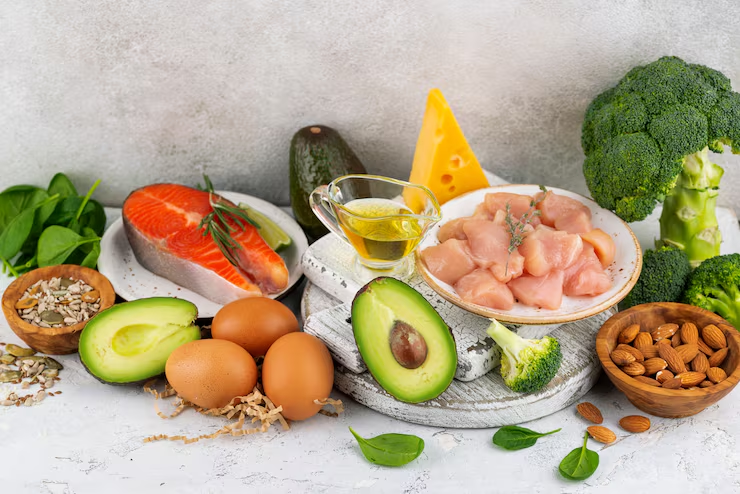
Prioritizing lean protein in every meal is a key strategy for effective weight loss. Protein helps build and maintain muscle, keeps you feeling full longer, and supports a healthy metabolism. Choosing lean sources like chicken, turkey, fish, eggs, and plant-based options ensures you get the benefits of protein without excess saturated fat.
Including adequate protein in each meal also stabilizes blood sugar levels and reduces cravings, making it easier to stick to your calorie goals. When combined with balanced carbohydrates and healthy fats, lean protein forms the foundation of meals that support fat loss while preserving muscle mass.
Macro recipes for weight loss are a practical way to make sure every meal contains enough protein. These recipes are designed to balance your macros effectively, allowing you to enjoy tasty, satisfying dishes while staying on track with your weight loss and nutrition goals.
Protein is the king of weight loss macros. It helps preserve muscle while in a calorie deficit and keeps hunger at bay.
How to apply:
Include a protein source in every recipe—chicken breast, turkey, eggs, fish, lean beef, tofu, or Greek yogurt.
Aim for at least 20–30g of protein per meal.
Recipe Idea: High-Protein Greek Chicken Bowl
Protein: Grilled chicken breast
Carbs: Quinoa, roasted sweet potato
Fats: Olive oil drizzle, avocado slices
Macros: 35g protein | 45g carbs | 12g fats
Use Complex Carbs for Sustained Energy
Using complex carbohydrates is essential for maintaining sustained energy throughout the day, especially when trying to lose weight. Unlike simple carbs that cause rapid spikes and crashes in blood sugar, complex carbs such as oats, quinoa, sweet potatoes, and whole grains release energy slowly. This steady energy helps you stay active, focused, and less likely to overeat.
Including complex carbs in your meals also provides important fiber, which aids digestion and keeps you feeling fuller for longer. When paired with lean proteins and healthy fats, complex carbs create balanced meals that support both fat loss and overall health. This approach ensures your body has the fuel it needs without excess calories from refined carbohydrates.
Macro recipes for weight loss often feature complex carbs as a core component. These recipes make it easy to enjoy nutritious, energy-boosting meals that fit your macro goals while keeping your weight loss journey sustainable and satisfying.
Not all carbs are created equal. Complex carbs digest slowly, preventing blood sugar spikes and crashes.
How to apply:
Choose whole grains, legumes, starchy vegetables, and fruits over refined carbs.
Time higher-carb meals around workouts for better performance and recovery.
Recipe Idea: Macro-Friendly Salmon & Brown Rice Plate
Protein: Baked salmon
Carbs: Brown rice, steamed broccoli
Fats: Tahini sauce
Macros: 30g protein | 40g carbs | 14g fats
Don’t Fear Healthy Fats
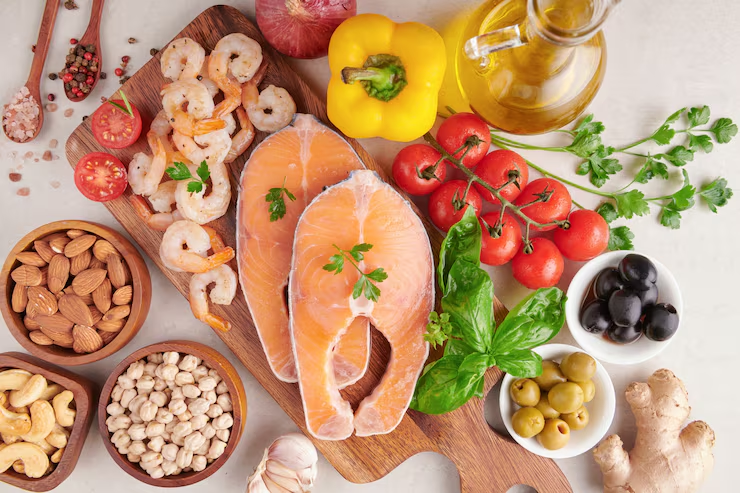
Don’t fear healthy fats when aiming for weight loss, as they play a crucial role in overall health and satiety. Healthy fats, found in foods like avocados, nuts, seeds, olive oil, and fatty fish, support brain function, hormone production, and nutrient absorption. Including them in your meals can help you feel satisfied, reducing the temptation to overeat or snack on unhealthy options.
Fats in moderation also help stabilize blood sugar levels and provide a slow-burning source of energy. Balancing healthy fats with proteins and complex carbohydrates ensures your meals are nutrient-dense and support fat loss without depriving your body of essential nutrients.
Macro recipes for weight loss often include healthy fats in precise portions to help you meet your daily macronutrient targets. These recipes make it simple to enjoy flavorful, satisfying meals while staying on track with your weight loss and overall nutrition goals.
Healthy fats keep you satisfied and support hormone balance, which is crucial for fat loss.
How to apply:
Include sources like avocado, nuts, seeds, olive oil, and fatty fish.
Keep fat portions moderate to stay within calorie limits.
Recipe Idea: Avocado & Egg Macro Toast
Protein: 2 boiled eggs
Carbs: Whole grain bread
Fats: Avocado spread, pumpkin seeds
Macros: 20g protein | 30g carbs | 16g fats
Batch Cook and Portion Ahead
Batch cooking and portioning meals ahead of time is a powerful strategy for staying on track with weight loss goals. Preparing meals in advance saves time during busy weekdays and helps prevent impulsive, unhealthy food choices. By planning your meals, you ensure that each dish aligns with your nutritional needs and calorie targets.
Portioning meals in advance also makes it easier to stick to your macros. Measuring out the right amounts of protein, carbohydrates, and fats ensures you’re consistently hitting your targets without guessing or overeating. This approach reduces stress around meal planning and helps maintain a balanced, structured eating routine.
Macro recipes for weight loss are perfect for batch cooking, as they are already designed with balanced macros in mind. Using these recipes allows you to prepare multiple meals at once, making it simple to enjoy nutritious, satisfying dishes throughout the week while staying on track with your weight loss goals.
Meal prep ensures you stick to your macros, even on busy days.
How to apply:
Cook proteins, grains, and veggies in bulk.
Use a food scale and portion into containers for grab-and-go meals.
Recipe Idea: Turkey Chili Meal Prep
Protein: Lean ground turkey
Carbs: Kidney beans, diced tomatoes
Fats: Olive oil for sautéing
Macros (per serving): 28g protein | 35g carbs | 10g fats
Balance Your Plate with the “Macro Rule”
Balancing your plate with the “Macro Rule” is an effective way to ensure every meal supports your weight loss goals. The Macro Rule focuses on including the right proportions of protein, carbohydrates, and fats in each meal. By following this approach, you provide your body with the nutrients it needs for energy, muscle maintenance, and overall health.
A balanced plate helps control hunger and prevents overeating. Protein keeps you full and supports muscle, complex carbs provide steady energy, and healthy fats promote satiety and hormone balance. This structured approach makes it easier to stay consistent with your nutrition plan without feeling deprived.
Macro recipes for weight loss simplify applying the Macro Rule. These recipes are designed with proper nutrient ratios in mind, making it easy to enjoy tasty, satisfying meals while hitting your macro targets. Using them ensures your weight loss journey is sustainable and enjoyable.
Visual portioning helps when you don’t have a scale handy.
How to apply:
½ plate: colorful veggies
¼ plate: lean protein
¼ plate: whole grains or starchy carbs
Add 1–2 thumb-sized servings of healthy fats
Recipe Idea: Grilled Shrimp & Veggie Skewers
Protein: Shrimp
Carbs: Couscous
Fats: Olive oil herb marinade
Macros: 26g protein | 33g carbs | 11g fats
Make Low-Calorie Swaps That Keep Macros Balanced
Making low-calorie swaps is a smart strategy to reduce overall calories without compromising nutrition. Simple changes, like replacing regular pasta with zucchini noodles, using Greek yogurt instead of sour cream, or choosing cauliflower rice over white rice, can cut calories while keeping meals satisfying. These swaps help you maintain energy levels and stay on track with your weight loss goals.
The key is to ensure that swaps don’t disrupt your macronutrient balance. For instance, if you reduce carbs with a lower-calorie alternative, you may need to adjust your protein or fat intake to meet your daily targets. Maintaining balanced macros supports muscle retention, stable energy, and overall health throughout your weight loss journey.
Macro recipes for weight loss often include smart low-calorie swaps to make meals both tasty and nutrient-dense. Using these recipes allows you to enjoy satisfying dishes while staying within your calorie and macro goals, making weight loss more achievable and sustainable.
Smart swaps allow you to save calories without sacrificing nutrition.
How to apply:
Swap sour cream for Greek yogurt
Use zucchini noodles instead of pasta
Choose cauliflower rice over white rice
Recipe Idea: Macro Zoodle Alfredo
Protein: Grilled chicken
Carbs: Zucchini noodles, small portion of whole grain pasta
Fats: Light cream sauce with olive oil
Macros: 33g protein | 28g carbs | 14g fats
Keep Snacks Macro-Friendly
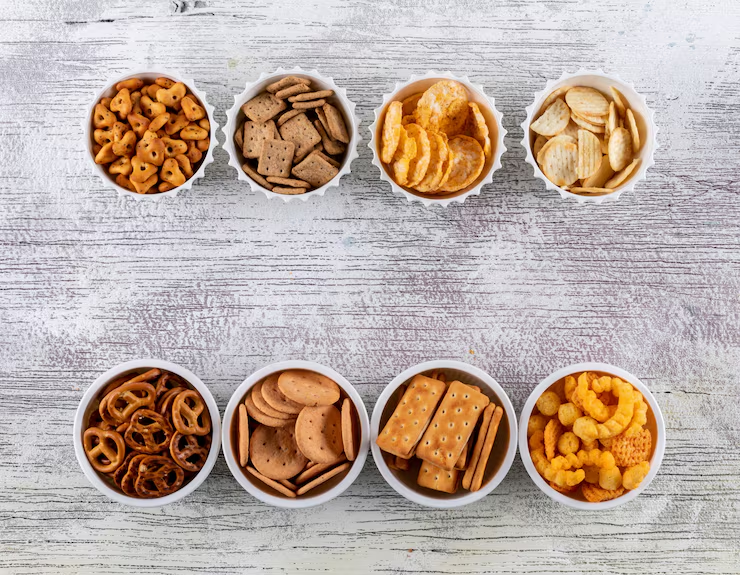
Keeping snacks macro-friendly is an important strategy for staying on track with your weight loss goals. Snacking can help manage hunger between meals, prevent overeating, and maintain energy levels throughout the day. Choosing snacks that balance protein, carbohydrates, and healthy fats ensures you’re fueling your body without derailing your progress.
Smart snack choices include options like Greek yogurt with berries, hummus with veggie sticks, nuts with fruit, or protein shakes. These snacks provide a satisfying combination of nutrients while keeping calories in check. Paying attention to portion sizes and macro balance helps you stay consistent with your daily targets, supporting both fat loss and muscle preservation.
Macro recipes for weight loss often include ideas for snack-sized portions that fit perfectly into your daily macros. Using these recipes makes it simple to enjoy delicious, nutrient-rich snacks while staying on track with your nutrition and weight loss goals.
Snacking doesn’t have to derail progress if you choose wisely.
How to apply:
Combine protein + fiber + healthy fats
Avoid snacks with only carbs, which can cause hunger spikes
Recipe Idea: Cottage Cheese Berry Bowl
Protein: Low-fat cottage cheese
Carbs: Fresh berries
Fats: Almond slivers
Macros: 20g protein | 18g carbs | 8g fats
Track and Adjust Based on Results
Tracking your food intake and adjusting based on results is essential for effective weight loss. Monitoring your daily calories and macronutrients helps you understand how your body responds to different foods and portion sizes. By paying attention to your progress, you can make informed adjustments to stay on track toward your goals.
Regular tracking allows you to identify patterns, such as which meals keep you full or which snacks may be adding unnecessary calories. If you’re not seeing the desired results, small tweaks—like adjusting your protein, carb, or fat intake—can make a significant difference. This flexible approach ensures your plan remains sustainable and tailored to your needs.
Macro recipes for weight loss simplify tracking and adjustments, as each recipe is already balanced to meet typical macro goals. Using these recipes helps you enjoy tasty, satisfying meals while accurately monitoring your intake and making changes based on your weight loss progress.
Your macro needs aren’t static—adjust them as your weight changes.
How to apply:
Use a food tracking app (MyFitnessPal, Cronometer)
If weight loss stalls, lower carbs/fats slightly while keeping protein high
Review your progress every 2–4 weeks
Recipe Idea: Build-Your-Own Macro Salad
Protein: Grilled chicken or tofu
Carbs: Roasted sweet potato chunks
Fats: Olive oil vinaigrette
Macros: 28g protein | 32g carbs | 12g fats
Sample 1-Day Macro Recipe Plan for Weight Loss
| Meal | Recipe | Protein (g) | Carbs (g) | Fats (g) |
|---|---|---|---|---|
| Breakfast | Avocado & Egg Macro Toast | 20 | 30 | 16 |
| Snack | Cottage Cheese Berry Bowl | 20 | 18 | 8 |
| Lunch | High-Protein Greek Chicken Bowl | 35 | 45 | 12 |
| Snack | Protein Shake + Almonds | 25 | 8 | 10 |
| Dinner | Salmon & Brown Rice Plate | 30 | 40 | 14 |
Conclusion

In conclusion, focusing on macronutrients is a practical and sustainable way to achieve weight loss while maintaining energy and muscle. By understanding and tracking your protein, carbohydrate, and fat intake, you can make informed choices that support your goals. Strategies like prioritizing lean protein, using complex carbs, including healthy fats, batch cooking, and making low-calorie swaps help create balanced, satisfying meals.
Macro recipes for weight loss make it easier to apply these principles consistently. They provide ready-made options that align with your macro targets, reduce guesswork, and keep your meals enjoyable and nutrient-rich.
Ultimately, combining thoughtful planning, balanced nutrition, and flexibility ensures long-term success. Tracking results and adjusting your approach allows you to stay on course while enjoying the process, making weight loss achievable, sustainable, and even enjoyable.
FAQs
Q1. What are macro recipes for weight loss?
Macro recipes for weight loss are meals designed with specific proportions of protein, carbohydrates, and fats. They help you meet your daily macronutrient targets while supporting fat loss, muscle maintenance, and sustained energy.
Q2. Do I need to track macros every day?
Tracking every day isn’t necessary for everyone, but monitoring your intake regularly helps ensure you stay on target. Using macro recipes for weight loss simplifies tracking because the nutrient content is already calculated.
Q3. Can I lose weight while eating fats?
Yes! Healthy fats are essential for hormone balance, brain function, and satiety. Macro recipes for weight loss include fats in balanced portions to support your goals without overconsuming calories.
Q4. Are macro recipes suitable for vegetarians or vegans?
Absolutely. Many macro recipes for weight loss can be adapted with plant-based proteins, whole grains, and healthy fats to meet your dietary preferences.
Q5. How do I adjust macros as I progress?
As your weight changes or activity level increases, your macro needs may shift. Tracking progress and using macro recipes for weight loss allows you to adjust portions and ratios to continue achieving results.
